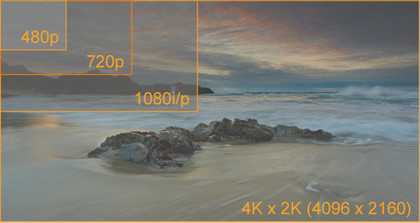HDMI 1.4: 10 things you need to know
Your complete guide to the next HDMI standard

The next-generation of HDMI interface has been rubber-stamped by the HDMI Licensing consortium. HDMI 1.4 isn't just a small upgrade, either.
With one eye firmly on the digital home there are several significant improvements to the technology, including integrated data connectivity and support for 3D. Here's what you need to know:
1. HDMI 1.4 features an integrated Ethernet channel
The new version of HDMI adds a bi-directional IP data channel to allow devices to send and receive data at full Ethernet speeds (ie up to 100Mbps). This basically eliminates the need for a separate Ethernet cable and enables web-capable devices (with HDMI 1.4 connectors) to share their internet connection with other HDMI gadgets. For example, an HDMI 1.4-equipped amp could act as the internet hub of a home cinema system, sharing its broadband access with a connected TV or set-top box.
2. There's support for dual-stream 1080p 3D
HDMI 1.4 defines several 3D formats for HDMI-enabled devices, including 'frame alternative', 'line alternative' and 'field alternative' methods, 'Side by side' methods (full and half) and '2D plus depth' methods. The new specification is also capable of handling dual-stream 3D resolutions up to 1080p. Having already made an impact on the big screen, 3D TV is arguably the 'next big thing' in home entertainment. Sky has recently announced its intention to launch a 3D channel, while 3D gaming experiments have already been conducted on the PC and PS3.
3. HDMI 1.4 supports "extremely high HD resolutions"
Sign up for breaking news, reviews, opinion, top tech deals, and more.
Specifically, HDMI 1.4 provides support for 4K x 2K resolutions, which is effectively four times the pixel-perfection of a current 1080p device. This allows HDMI 1.4 to handle digital video in the same resolution as current digital cinema systems. Formats supported by HDMI 1.4 include: 3840 x 2160 pixels at 24Hz, 25Hz and 30Hz; and 4096 x 2160 pixels at 24Hz.

HIGHER DEF: HDMI 1.4 provides support for 4K resolution TVs. That's 4096 x 2160 pixels at 24Hz
4. There's a new Audio Return Channel...
According to HDMI.org, "in cases where a TV features an internal content source, such as a built-in tuner or DVD player, the Audio Return Channel allows the TV to send audio data upstream to the A/V receiver via the HDMI cable, eliminating the need for an extra cable."
5. … And extended support for color spaces
Specifically, HDMI 1.4 includes support for sYCC601, Adobe RGB, and Adobe YCC601 to enable colours to be more accurately reproduced when viewing digital photos on your digital telly.